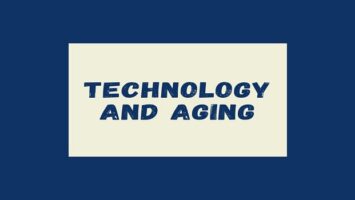Table of Contents
Unraveling the Intricacies of a Software Testers Work and Responsibilities:
In the realm of software development, the significance of software testing cannot be overstated. It serves as the bedrock for ensuring the impeccable quality, functionality, and user experience of software applications. A software tester shoulders the responsibility of upholding these standards and orchestrating a seamless software development life cycle. In this comprehensive exposition, we delve into the multifaceted world of software testing, shedding light on the working methodologies and myriad responsibilities.
Decoding the Workings and Responsibilities of a Software Tester:
Software testers, armed with profound expertise in the software development process, collaborate closely with developers, project managers, and other stakeholders. Their primary objective is to unearth defects, enhance software quality, and ensure optimal operational efficiency. Let us embark on an in-depth exploration of a software tester’s modus operandi and the accompanying array of responsibilities intrinsic to their role.
The Role of a Software Tester:
At the heart of a software tester’s purview lies the evaluation of software applications, replete with identifying defects, bugs, and vulnerabilities. Through a series of meticulous tests, they ensure that the software adheres to requisite standards and meticulous specifications. Herein lie their core responsibilities:
(1) Test Planning: A software tester actively engages in the nascent stages of the software development life cycle, comprehending requirements, and devising test plans of commensurate scope. They define the gamut of testing, its objectives, and strategies to ensure sweeping test coverage.
(2) Test Design: Testers create test cases and scenarios by drawing from software requirements and design blueprints. By identifying inputs, expected outputs, and test conditions, they facilitate the execution of efficient and effective tests.
(3) Test Execution: Armed with prepared test cases, software testers proceed to execute them meticulously, recording and scrutinizing the outcomes. Should deviations, defects, or issues manifest themselves contrary to anticipated behavior, they promptly relay these findings to the development team.
(4) Defect Tracking: Employing defect tracking tools, testers meticulously log and monitor issues encountered during testing. By furnishing comprehensive details concerning defects, including reproducibility steps, severity, and priority, they equip the development team with vital information for rectification.
(5) Regression Testing: Whenever software undergoes modifications, testers execute regression tests to ensure the changes do not spawn new defects or disrupt existing functionalities. This iterative process perpetuates the overall stability of the software.
Software Testing Course:
A software testing course is an extensive preparation program intended to furnish people with the information, abilities, and methods expected to succeed in the field of programming testing. These courses cover a large number of points, including testing strategies, test arranging, test execution, imperfection following, robotization devices, and industry best practices.
Manual Testing Course:
A manual testing course centers explicitly around the specialty of manual testing. The manual testing course includes physically executing experiments, distinguishing surrenders, and guaranteeing the product capabilities as planned. It expects meticulousness, decisive reasoning, and a profound comprehension of the product under test.
Automation Testing Course:
Automation testing course refers to the most common way of utilizing particular programming devices and contents to execute pre-characterized experiments and check the normal way of behaving of programming applications. Not at all like manual testing, which depends on human mediation, computerization testing permits analyzers to save time and exertion via robotizing redundant undertakings and performing thorough tests in a more limited length of time.
Testing Methodologies and Techniques:
To engender comprehensive coverage and assure quality, software testers employ an array of testing methodologies and techniques. Prominent among them are the following:
(1) Black Box Testing: By adopting the Black Box Testing approach, testers evaluate software sans any knowledge regarding its internal structure. Instead, they concentrate on inputs and outputs to determine if the software functions as intended.
(2) White Box Testing: In White Box Testing, testers delve into the internal structure and code of the software, ferreting out potential defects. Armed with access to the source code, they design targeted tests that scrutinize specific components or functionalities.
(3) Automated Testing: Automated Testing leverages specialized software tools to execute test cases automatically. This approach enhances testing efficiency, facilitating test repetition, and proving especially valuable for regression testing.
(4) Performance Testing: Performance Testing assesses software responsiveness, scalability, and stability under varied workloads. Testers simulate real-world scenarios, gauging the software’s speed, reliability, and resource usage.
Conclusion:
Wedevx Software testing constitutes a pivotal cog in the realm of software development, guaranteeing the delivery of impeccably high-quality and dependable applications. Their shoulder the mantle of identifying defects, enhancing software performance, and amplifying user experience. Through the adept application of diverse testing methodologies and techniques, testers contribute to the overall triumph of software projects. Their dexterity and meticulousness minimize risks, ensuring that software applications epitomize the desired benchmarks of quality and functionality.
Frequently Asked Questions (FAQs):
Q: Is programming knowledge indispensable for a software tester?
A: While programming knowledge proves advantageous for software testers, enabling them to grasp software code and identify potential defects more efficiently, it is not an absolute prerequisite. Testers can excel in their roles by wielding strong analytical and problem-solving skills.
Q: What challenges do software testers encounter?
A: Software testers frequently grapple with challenges such as time constraints, shifting requirements, and seamless coordination with development teams. Furthermore, they must keep pace with ever-evolving technologies and tools to remain attuned to the dynamic software landscape.
Q: What are the various types of software testing?
A: The range of programming testing envelops assorted types, including user testing, ease of use testing, execution testing, security testing, similarity testing, and relapse testing. Each type centers on unambiguous features of programming quality and usefulness.
Q: Can manual testing courses lead to a successful career in software testing?
A: Manual testing courses give major areas of strength for testing standards and scrupulousness. Numerous fruitful analyzers have fabricated their vocations beginning with manual testing and progressively extending their abilities in different regions.
Q: Is a software testing course necessary for a career in software testing?
A: While not compulsory, a software testing course offers various benefits, including an exhaustive range of abilities, mechanization capability, and industry significance. It altogether improves your employability and opens ways to assorted professions.
Q: Which automation testing tools are commonly covered in automation testing courses?
A: Automation testing courses normally cover well-known mechanization testing apparatuses like Selenium, Appium, TestComplete, and JUnit. These apparatuses are broadly utilized in the business and give strong highlights and functionalities to mechanizing experiments.









Comments (No)